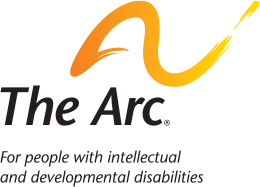The Arc Joins Lawsuit to Protect the U.S. Department of Education and the Rights of Students With Disabilities
The Arc of the United States has joined a major lawsuit challenging federal actions to dismantle the U.S. Department of Education. The case, Somerville Public Schools et al v. Trump et al, argues that because the Department was created by Congress, it cannot be restructured or eliminated without Congressional approval. The lawsuit also asserts that recent mass layoffs and other efforts to stop the Department’s work have stripped away essential protections for students with disabilities.
At the center of the case is a question with national impact: What happens to students with disabilities when the very offices that support them and protect their education rights are gone?
Since early 2025, thousands of Department employees have been laid off, including nearly all staff in the Office of Special Education and Rehabilitative Services (OSERS) and the Office for Civil Rights (OCR). These offices are the backbone of federal enforcement for disability education laws. They:
- Ensure schools follow the Individuals with Disabilities Education Act (IDEA) and Section 504 of the Rehabilitation Act
- Distribute education funding to states and schools
- Investigate discrimination complaints
- Fund research on effective teaching strategies
- Support training and retention of special educators
- Coordinate transition services that help youth with disabilities prepare for employment and independent living
The absence of these offices threatens to unravel decades of progress toward equal educational opportunity.
The Arc joined this lawsuit as a plaintiff to help ensure the Department remains fully functional, open, and accountable to students with disabilities and their families.
What Is the Somerville v. Trump Case About and Why Did The Arc Join It?
In March 2025, nearly half of the Department of Education’s 4,133 employees were fired, including many responsible for implementing and enforcing federal disability education laws.
A coalition of educators, school districts, and unions filed a lawsuit soon after to stop the mass layoffs and dismantling of the Department. In April 2025, The Arc filed a declaration in support of the lawsuit, explaining how these changes would harm students with disabilities and their families.
In May 2025, a district court judge issued an injunction temporarily stopping the mass firings and dismantling. Two months later, the U.S. Supreme Court allowed the firings and efforts to dismantle the Department of Education to continue while the case proceeds in the U.S. District Court for the District of Massachusetts.
In October 2025, the situation worsened when nearly all remaining staff in the OSERS were laid off during the government shutdown, leaving only a few employees to oversee the nation’s special education and vocational rehabilitation systems. These layoffs were reversed in mid-November as part of a deal to end the shutdown.
The Arc joined the lawsuit as a plaintiff on November 25, 2025.
Why Is the U.S. Department of Education So Important for Students With Disabilities?
The Department of Education plays a central role in protecting the rights of students with disabilities and ensuring that schools have the tools and guidance to meet students’ needs.
The Department’s core responsibilities include:
- The Office of Special Education and Rehabilitative Services (OSERS) implements and oversees federal laws like IDEA and Section 504, ensuring that every child receives a free and appropriate public education.
- The Office of Special Education Programs (OSEP) provides teacher training, technical assistance, and guidance to help schools support students with disabilities.
- The Rehabilitation Services Administration (RSA) helps youth with disabilities transition from school to work and community life.
- The Office for Civil Rights (OCR) investigates disability discrimination in schools under the Americans with Disabilities Act (ADA) and Section 504, as well as other statutes, allowing families to resolve legal issues without going to court.
When these offices lose staff and resources, families lose access to the federal safety net that ensures their children can learn, participate, and thrive.
How Could Dismantling the Department of Education Affect Students With Disabilities?
Weakening or eliminating the Department of Education will make it harder for students with disabilities to receive the education they are guaranteed under federal law. These cuts could reduce enforcement of disability rights, slow the distribution of IDEA funding, and limit training and guidance that schools and teachers rely on to support their students.
The impact is deeply personal. It affects whether:
- A child with Down syndrome receives the therapies outlined in their Individualized Education Program (IEP)
- A teenager with autism has access to vocational and transition services
- A parent can challenge a school’s failure to provide necessary accommodations
For many, the Department of Education has been the last line of defense against discrimination and neglect. Without it, families face inconsistent state standards, longer wait times, and fewer options for resolving disputes.
What Is The Arc’s Role in Protecting Special Education and Disability Rights?
The Arc joined this lawsuit to defend the rights of students with disabilities to a free, appropriate public education guaranteed by federal law. The Arc’s involvement ensures that the voices of families and people with disabilities are represented as the case moves forward.
This action builds on The Arc’s long history of advancing educational rights through litigation and advocacy. In 1971, The Arc of Pennsylvania brought PARC v. Pennsylvania, the landmark case that established the constitutional right to a public education for children with intellectual disabilities. That decision paved the way for IDEA and the modern Department of Education.
Today, The Arc continues to advocate through the courts and with partners nationwide to ensure every student with a disability has the opportunity to learn, grow, and belong in their community.
Learn More About the Department of Education Lawsuit and Disability Rights
- Somerville Public Schools et al v. Trump et al
- Declaration of Katy Neas, CEO of The Arc
- Supreme Court Clears Path for Dismantling of Education Department, Putting Students With Disabilities in Harm’s Way
- Education Policy Advocacy
Written by Shira Wakschlag, Senior Executive Officer of Legal Advocacy and General Counsel, and Katy Neas, Chief Executive Officer of The Arc of the United States. Both are available for media interviews.
















